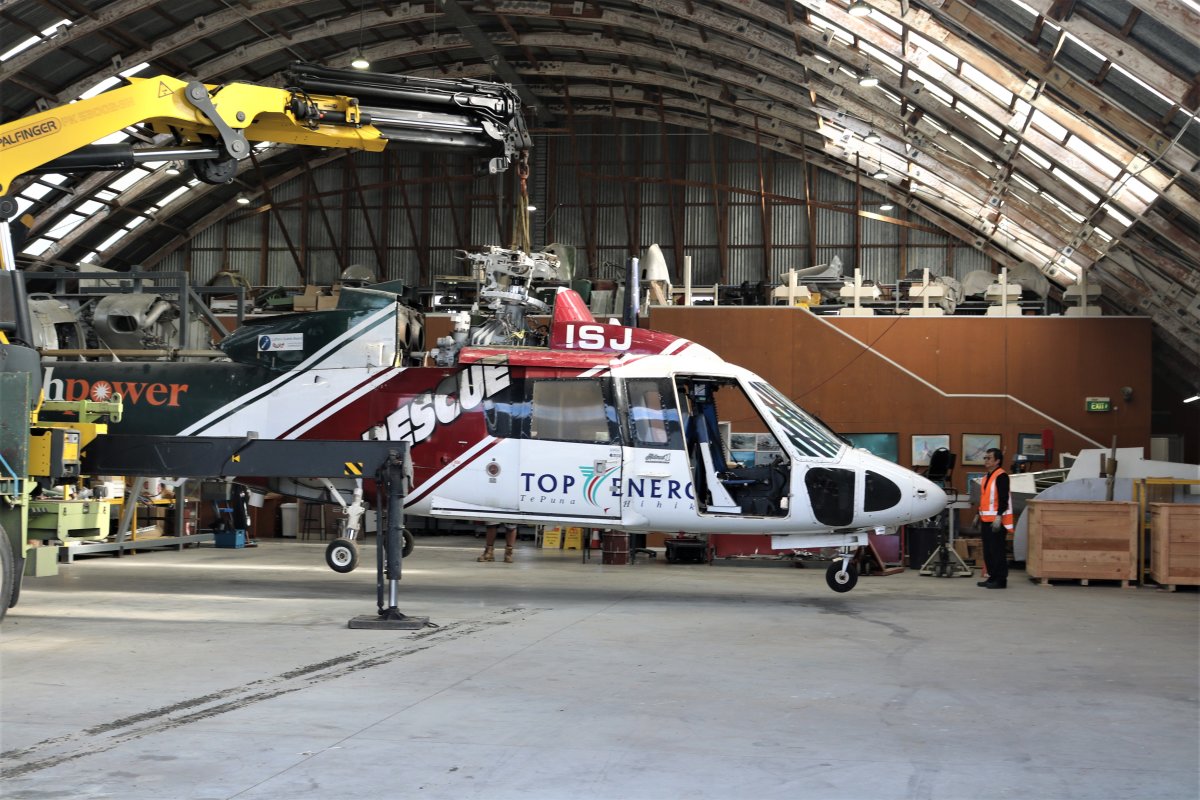Juliet gets a new lease on life at MOTAT

The Northland Emergency Services Trust (NEST) has donated to MOTAT a retired Sikorsky S-76A that flew rescue missions in Te Tai Tokerau for 23 years and was affectionately known as Juliet. At MOTAT the helicopter will be restored to “as new” and eventually go on display in the Aviation Hall.
A farewell ceremony was held on Wednesday morning in Whāngarei, with a blessing by Kaumatua Fred Tito. NEST Trust Board Chairperson Paul Ahlers spoke of the valued service of Juliet to Northlanders – as did trustee and former chief pilot Peter Turnbull, who flew the most hours in the helicopter. Peter gifted a book of the history of Sikorsky helicopters to MOTAT.
A team from Collections travelled to Whangārei and transported helicopter parts by van, while the fuselage travelled across the motu via truck. Reassembly of the Sikorsky will take about six months, along with some rejuvenation of the paintwork.
MOTAT Transport Curator Chelsea Renshaw says: "Getting the Sikorsky to MOTAT has been the effort of many. Thank you to NEST for bringing together all parts required for reassembly, to the Registry Team for their involvement in logistics and, finally, to Collections Workshops who will be integral over the next few months in preparing Juliet for our visitors to enjoy."
Juliet led an adventurous life even before being put to work on rescue missions and if the Sikorsky could talk, it would have many adventurous tales to tell.
The Sikorsky was originally owned by the King of Jordan and later by Dick Smith, the founder of Dick Smith Electronics. Between 1994 and 1995, the helicopter took the Smiths (Dick and wife Pip) on the first east-to-west circumnavigation of the world, at an altitude of just 500 feet to get clear photos for the book Above the World.
Back in 1997, the Sikorsky’s reputation for safety, reliability, smooth flying and long-range capability made it ideal for search and rescue when it was put to work in Northland. It could make rescues up to 150km out to sea and travel a range of 742km at full load.
Its work included hospital transfers and, in emergencies, it could land on beaches, farmland, roads and in bush, and winch-rescue people from places too difficult to land. The Sikorsky also featured specialised equipment for flying at night and in the clouds, so it could carry out night rescues, whatever the weather.
Its retirement in 2019 was well deserved after 10,633.60 flying hours in its working life.
Chelsea says, “The Sikorsky complements our existing Collection really well because it adds to the growing collection of first-response objects that have had an impact on New Zealanders’ lives. It is also special to acquire something that has been an important part of search and rescue in Te Tai Tokerau.
“Technologically, it is interesting as the only helicopter in our collection featuring retractable landing wheels rather than skids – this made it safer for powerful medium and heavy lifting.”
The Sikorsky’s four-bladed main and tail rotors gave it the extra power needed for lifting and carrying heavy loads, making it ideal for rescue and ambulance operations, says Chelsea.

For more information, to arrange a visit or to request images or interviews, please contact Nicole Parish, Senior Communications Advisor
nicole.parish@motat.org.nz | 021 273 3563